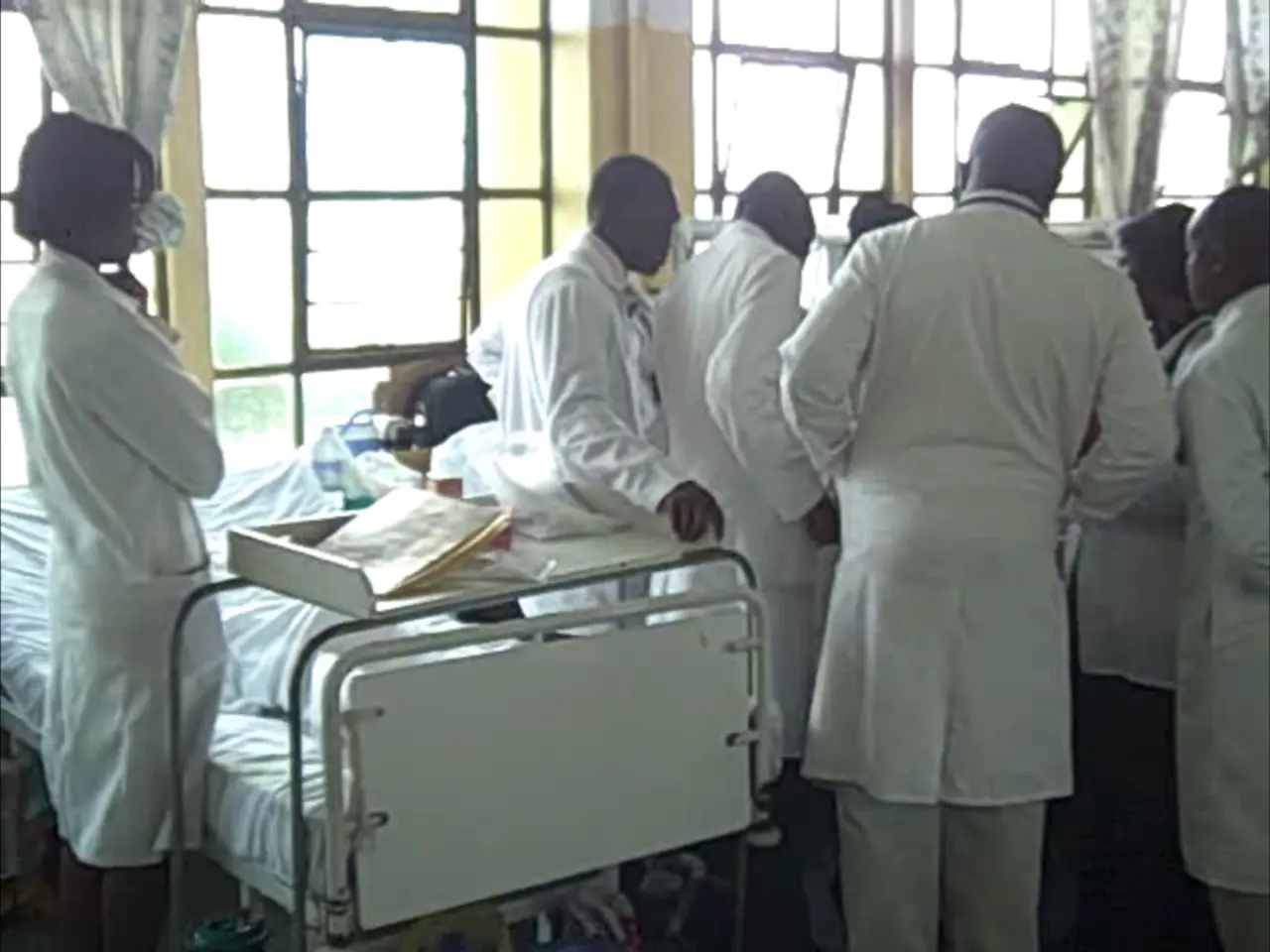Research into polio was initiated by Dr. Jakob Heine of Stuttgart
In the 19th century, a German physician named Jakob Heine made significant strides in understanding a disease that would later be known as poliomyelitis, or polio. Born in Lauterbach, Black Forest, Heine's career began in earnest when he earned his doctorate in medicine in 1827 with a study on the ligation of the femoral artery.
Heine's groundbreaking work on polio came in 1840, when he published "Observations on paralysis of the lower extremities and their treatment." This document, which later became known as "Spinal Infantile Paralysis," provided one of the first detailed clinical descriptions of the disease. Heine's work systematically presented and differentiated polio from other conditions with similar symptoms, such as meningitis or encephalitis.
Heine's clinic in Cannstatt, near Stuttgart, became so successful that it transformed into a spa clinic. Patients from all over Europe trusted in Heine's orthopedic skills, and the institution's specialties were deformities and movement restrictions of the spine and extremities. The clinic employed pedagogical staff to prepare young patients for an occupation suited to their abilities, and almost all polio cases that left Cannstatt did so with increased mobility and improved gait.
The state parliament granted subsidies to accommodate indigent patients at the institution founded by Heine, and even King Wilhelm I of Württemberg visited and supported the clinic. Heine's work laid the foundation for understanding polio as a distinct neurological disease causing paralysis.
Initially, Heine believed that problems with teething caused the disease, but later recognized the role of the spinal cord. It wasn't until 1890 that Oskar Medin identified polio as an infectious disease and dubbed it Heine-Medin disease in recognition of Heine's contributions.
Jakob Heine's impact on polio research and treatment is still felt today. His work is commemorated in the Polio Hall of Fame, established in Warm Springs, Georgia, to honour Franklin D. Roosevelt. The hall of fame features busts of polio experts from around the world, including Heine himself.
The World Health Organization (WHO) and its partner institutions continue to honour the achievements of researchers like Heine on World Polio Day, which takes place on October 28. And while the actual cause of polio was not understood by Heine at the time, the advancements in medical science since his work have led to a significant reduction in polio cases worldwide. In fact, there has been no infection with the polio virus in Germany since 1992, with the last detected pathogens likely from the vaccine.
In conclusion, Jakob Heine was a pioneer in the clinical study of polio during the 19th century. His thorough clinical characterization of the disease helped distinguish it from other neurological disorders, facilitating later research into its epidemiology, pathology, and eventual vaccine development. Heine's work laid the foundation for understanding polio as a distinct neurological disease causing paralysis, and his contributions continue to be honoured and celebrated today.
- The Municipality of Warm Springs, Georgia, recognized Jakob Heine's impact on polio research and treatment by establishing a Polio Hall of Fame, honoring him alongside global polio experts.
- In the realm of science, Heine's work in the 19th century on understanding polio, a chronic disease known to cause neurological disorders, formed the basis for future therapies and treatments.
- With advancing scientific knowledge, the medical community has been able to identify polio as an infectious disease, a discovery that was not apparent during Heine's time, and has led to a reduction in polio cases around the world.
- Heine's clinic, known for its success in treating patients with various health-and-wellness conditions including polio, also focused on fitness-and-exercise and rehabilitation programs, helping patients improve their mobility and gait.
- As space-and-astronomy continues to evolve, there is much to learn about the implications of neurological disorders such as those associated with polio, and how advances in science may one day extend to include possible CBD-based treatments for these conditions.




